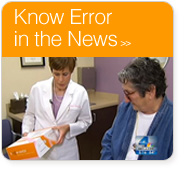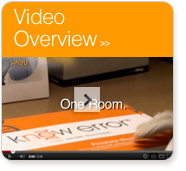Evidence of Error
The journal articles listed below provide further insight into the existence of Specimen Provenance Complications (SPCs) in the diagnostic process. They also confirm the need for DNA Specimen Provenance Assay of positive biopsy results to prevent diagnostic mistakes resulting from SPCs. Each link provides access to full versions of the articles through PubMed.gov and various other online journals.
Urology—Specimen Provenance Testing Identifies Contamination Affecting Prognostic Results
Specimen Provenance Testing Identifies Contamination that Affects Molecular Prognostic Assay Results in Prostate Cancer Biopsy Specimens
Latham Wojno, Caitlyn Minutella, Donald Moylan, Arla Bush, and Kirk Wojno. Specimen Provenance Testing Identifies Contamination That Affects Molecular Prognostic Assay Results in Prostate Cancer Biopsy Specimens. Urology, Vol. 115, May 2018, 87-91.
American Journal of Clinical Pathology—Occult SPCs in Routine Clinical Next-Gen Sequencing
Occult Specimen Contamination in Routine Clinical Next-Generation Sequencing Testing.
Jennifer K. Sehn, MD, David H. Spencer, MD, PhD, John D. Pfeifer, MD, PhD, Andrew J. Bredemeyer, PhD, Catherine E. Cottrell, PhD, Haley J. Abel, PhD and Eric J. Duncavage, MD. Occult Specimen Contamination in Routine Clinical Next-Generation Sequencing Testing. American Journal of Clinical Pathology. October 2015;144:667-674.
The Journal of Urology—Clinical and Economic Implications of SPCs
The Clinical and Economic Implications of Specimen Provenance Complications in Diagnostic Prostate Biopsies.
Wojno, K.; Hornberger, J.; Schellhammer, P.; Dai, M.; Morgan, T. The clinical and economic implications of specimen provenance complications in diagnostic prostate biopsies, The Journal of Urology. 2015 Apr;193(4):1170-7.
American Journal of Clinical Pathology—Rate of Occult SPCs
Rate of Occult Specimen Provenance Complications in Routine Clinical Practice
Pfeifer JD, Liu J. Rate of occult specimen provenance complications in routine clinical practice. American Journal of Clinical Pathology. 2013;139(1):93-100.
Value in Health—Provenance Testing of Biopsy Specimens
Development of a Decision-Analytic Model for the Application of STR-Based Provenance Testing of Transrectal Prostate Biopsy Specimens
Pfeifer JD, Singleton MN, Gregory MH, et al. Development of a decision-analytic model for the application of STR-based provenance testing of transrectal prostate biopsy specimens. Value in Health. 2012;15(6):860-867.
Journal of Clinical Oncology—Biopsy Misidentification Identified by DNA
Biopsy Misidentification Identified by DNA Profiling in a Large Multicenter Trial
Marberger M, McConnell JD. Fowler I, et al. Biopsy misidentification identified by DNA profiling in multicenter trial. Journal of Clinical Oncology. 2011; 29(13):1744-1749.
American Journal of Clinical Pathology—DNA-Based Specimen Provenance Testing
The Changing Spectrum of DNA-Based Specimen Provenance Testing in Surgical Pathology
Pfeifer JD, Zehnbauer B, Payton J. The changing spectrum of DNA-based specimen provenance testing in surgical pathology. American Journal of Clinical Pathology. 2011;135:132-138.
Pathology Case Reviews—Specimen Identity Testing Using DNA Analysis
Harada S, Gocke C. Specimen identity testing using deoxyribonucleic acid analysis in clinical and surgical pathology setting. Pathology Case Reviews. 2010;15(4):116-120.
Journal of Urology—Patient Identification Error Among Biopsy Specimens
Patient Identification Error Among Prostate Needle Core Biopsy Specimens–Are We Ready for a DNA Time-Out?
Suba EJ, Pfeifer JD, Raab SS. Patient identification error among prostate needle core biopsy specimens–are we ready for a DNA time-out? Journal of Urology. 2007;178:1245-1248.
CAP Today—With AP Specimen Identification
With AP Specimen Identification, the Hero Is Zero
Ford A. With AP specimen identification, the hero is zero. CAP Today. 2007.







